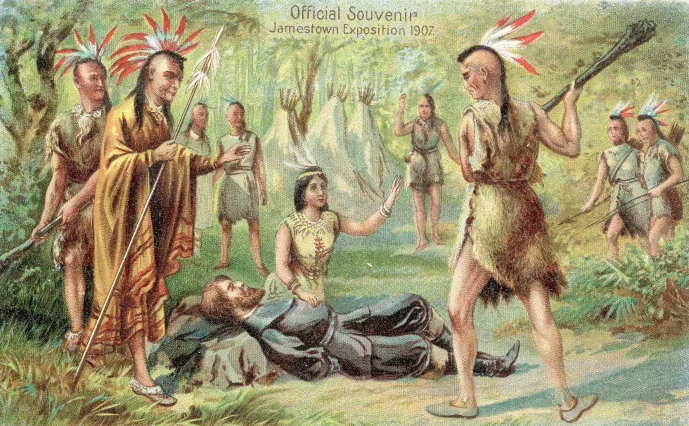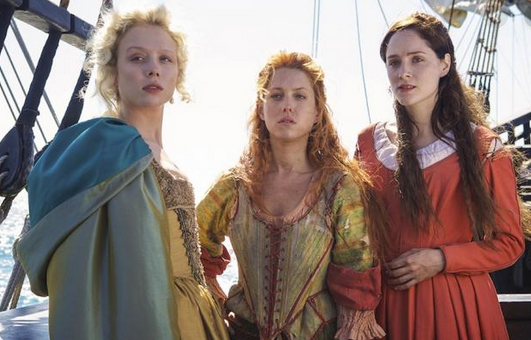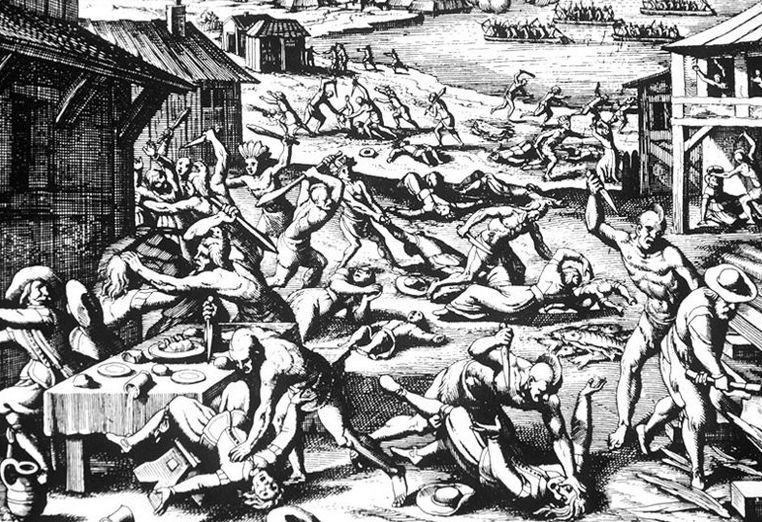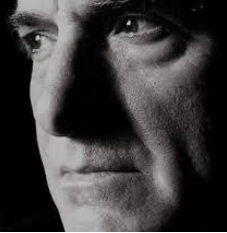
Jamestown, Virginia, was the first permanent British settlement in the Americas. It was named in 1607 after King James I, son of Mary, Queen of Scots, King of England and Ireland, who also reigned as King James VI of Scotland.
A more damned crew Hell never vomited.
—George Sandys, Virginia Company treasurer
The three types of colonies that the British established in the Americas were Charter Colonies, Proprietary Colonies and Royal Colonies. Jamestown originated as a Charter Colony, in which the King granted control to a local colonial government to establish the practical rules of day-to-day governance. A Proprietary Colony required private investment, and was frequently used to reward friends and allies of the King. A Royal Colony was administered by a governor appointed by the Crown, but Royal Colonies often had elected governments and were self-governing.
Joe Dolce’s column appears in every Quadrant.
Click here to subscribe
Spain, Portugal and France had already made inroads into the New World by explorers such as Christopher Columbus (1492), Amerigo Vespucci (1507) and the Spanish conquistador Don Hernán Cortés (1590), conqueror of the Aztecs and Incas. The enormous riches that Cortés discovered, particularly gold, inspired sponsorship of the early British expeditions by wealthy businessmen seeking to increase their fortunes.
Jamestown is a three-part, twenty-four-episode television mini-series produced by Carnival Films, the people behind Downton Abbey, and filmed in Hungary. Sam Wollaston, of the Guardian, wrote:
[Jamestown’s] certainly a goldmine from a storyteller’s point of view. There are all sorts of horrors here—the birth of the British empire and of modern America, war and slavery just round the corner. It’s an almost endless seam of stories, and the three recent arrivals, each with their own horrors and journeys, are a good route in.
Bernard Cornwell once said, “Most historical novels have a big story, and a little story—you flip them and put the little story in the foreground.”
In Jamestown, the big story is the cathartic transformation of the 1606 trading settlement of the Virginia Company (also known as the London Company)—initially chartered by King James, off the coast of Virginia between latitudes 34 and 41, as an investment, with the aim of discovering gold and silver—into a Crown Colony in 1624, while at the same time bestowing on it the right to self-government. This unusual hybrid, ironically, led to the birth of American democracy.
Jamestown tells the personal stories of three women who come over from England for pre-arranged marriages with settlers who have paid their fares. The themes the series explores include the Papist–Protestant struggle of Old World England and the ever-present threat of indigenous resistance to the increasing number of Europeans. The three sections of Jamestown span the period from 1619, twelve years after the colony has been established, up until the Indian Massacre of 1622.
 After a long and dangerous voyage from England, Alice Kent, Verity Bridges and Jocelyn Woodbryg disembark at the colony of Jamestown to meet the men they have been consigned to marry. Alice is to be wed to a mean and brutal man named Henry Sharrow, but is immediately attracted to his kinder brother Silas. Verity’s drunkard husband, Meredith Rutter owns the local tavern. Jocelyn is engaged to the Virginia company recorder, Samuel Castell.
After a long and dangerous voyage from England, Alice Kent, Verity Bridges and Jocelyn Woodbryg disembark at the colony of Jamestown to meet the men they have been consigned to marry. Alice is to be wed to a mean and brutal man named Henry Sharrow, but is immediately attracted to his kinder brother Silas. Verity’s drunkard husband, Meredith Rutter owns the local tavern. Jocelyn is engaged to the Virginia company recorder, Samuel Castell.
On a trading trip upstream with Chacrow, a Pamunkey tribal intermediary and translator, an explosion occurs on one of their canoes. Henry is thought to have been killed, although his body isn’t recovered, and his brother Silas returns distraught to the colony. Alice is now free to marry him but Silas feels it is too close to his brother’s death. Alice is also being courted by the local blacksmith, James Read. Verity is a feisty and argumentative woman and these traits cause her to be accused of witchcraft. A sickness ravages the village and the colony’s doctor, Christopher Priestley, is forced to resort to local “pagan” medicinal herbs, angering the Christian preacher, Michaelmas Whitaker.
The Pamunkey people are concerned that the influx of women arriving in the settlement indicates that the white strangers are not simply traders, but are intent on remaining.
Henry Sharrow is discovered alive, badly disfigured by the fire, and living with the Pamunkey tribe, who have nursed him back to life. Read is refused permission, by the Governor of the colony, Sir George Yeardley, to wed Alice, so she finally marries Silas. But when a rumour arises that Henry might be still alive, Silas leaves to search for him, and brings him back to the settlement. This creates a dilemma, as Silas is now married to his brother’s wife.
An unexpected British ship arrives with instructions from King James for Governor Yeardley to institute a self-governing democracy in the colony, and the first democratic vote is held.
Alice gives birth to Silas’s son, the first child born in the settlement. Rumours arise of a Catholic spy in the all-Protestant camp and Jocelyn accuses Doctor Priestley. Alice’s baby is kidnapped, the Pamunkey suspected as culprits, and the Governor raises a militia to rescue the child, but also sees this as an opportunity to suppress the growing dissidence of the natives. Before an attack is launched, Alice’s baby is found alive, floating down the river in a small canoe. Henry marries Chacrow’s sister, Winganuske.
Read arranges for an arranged wife to be transported to him from England, but when the ship arrives, she is found to have died on route. This tragedy catalyses a reconciliation between Silas and Read.
The colony is now rapidly growing beyond the comfortable perimeters of the settlement and Governor Yeardley plans to covertly burn one of the settlers’ tobacco crops and blame the Pamunkey, as an excuse to attack them and appropriate more of their land, but Alice tells Chacrow of the plan. Silas, in disgust, leaves the settlement, becoming an initiated member of the Pamunkey people, receiving a new name, Kukupunkway; he is declared a traitor by the governor. Silas initiates a strategy to kill the governor, which fails. As he has not received sanction from the Pamunkey chief for the killing, Silas is exiled from the tribe.
Henry asks the governor to pardon Silas and let him back into Jamestown. In a plan to infiltrate the colony, Chacrow gains the trust of the settlers. A Pamunkey chieftain, Opechancanough, orders Chacrow to kill Silas, but Chacrow alerts Silas to the danger. Opechancanough initiates a war. Silas and his family flee as hundreds of settlers are attacked by the marauding Pamunkey.
Most of the primary actors in Jamestown were selected from a B-list of British actors, most with only television supporting roles to their credits, but Jason Flemyng, who played Sir George Yeardley, has had major roles in several films. Kalani Queypo (Chacrow) appeared in Terrence Malick’s feature film about the founding of Jamestown, The New World. In an interview with Vincent Schilling of Indian Country Today, Queypo said:
I am speaking the Pamunkey language which has been specifically reawakened for this project by Dr Craig Kopris after over 150 years … the producers took great care not only to invite First Nations people to play the “core” warriors and villagers, but within that group of fifty-plus actors were six individuals who descend from the Pamunkey lineage. Playing the role of Chacrow is a huge challenge. The portrayals of Native characters are rich and multi-layered in this series, which makes [them] so gratifying to play. Oftentimes Native characters are simply “sidelines” in so many period films and television projects. But in Jamestown the Native characters are highly-nuanced with agendas and humanity.
The series’ writer, Bill Gallagher, directed two Jamestown episodes himself. Over the span of the three series there were eight other directors. Sam Wollaston noted:
Jamestown is made by the people who made Downton Abbey, and though the setting is very different, it has a few things in common: sumptuousness, open-ended narrative, the odd curveball. It’s more fun than high culture or history lessons. An expensive soap, in other words.
Peter Crawley of The Irish Times thought Jamestown was an “absurd, generic and risible show” about “a hive of men starved of women”. But Gerard O’Donovan, of the Daily Telegraph, disagreed:
It was a terrific idea for a story and the three [Alice, Verity and Jocelyn] had very different backgrounds and expectations. Bill Gallagher’s script hooked instantly because this was a world seen from a more psychologically real perspective than strict adherence to historical accuracy would allow … I, for one, want to know more about how these cleverly wrought characters progress with their challenging new lives in the New World.
Jeanette Winterson once wrote, “What we fail to remember is this: the past is not merely the present in period dress.” This is one of the reasons modern audiences have such difficulty with the morals and behaviour of early Europeans, which were anything but “correct” by today’s standards.

Kate Maltby of the Financial Times, questioned the accuracy of the show, especially its portrait of women (above):
If anything, Jamestown exaggerates the sufferings of its women for titillating effect … the real female settlers in Virginia had a high level of freedom compared with their English sisters: the Virginia Company outlawed wife-purchasing (the whole premise of Jamestown), stating in its charter: “the liberty of marriage we dare not infringe” (this did not, naturally, apply to non-white women).
The ancestors of the Algonquian peoples are believed to have first arrived in the Americas over 12,000 years ago. No one knows where they originated. When the Europeans came, the Algonquians had been in continuous inter-tribal warfare and conflict with the Iroquois Confederacy, a league of five tribes—the Mohawk, Oneida, Onondaga, Cayuga and Seneca peoples, collectively known as the Haudenosaunee, or the “People of the Longhouse”. The legendary Hiawatha was an Onondagan chief, a skilled orator and the co-founder of the Confederacy.
The ships of the Virginia Company landed in 1607, and Jamestown was founded, and named, by the captain of the expedition, an English seaman and privateer, Christopher Newport. Although the company failed to discover any precious metals, a new sweeter strain of tobacco, first discovered in Trinidad, smuggled in by John Rolfe (Spain enforced the death penalty on anyone selling tobacco seeds to non-Spaniards), and cultivated in the rich soil of the Jamestown settlement, developed into such a bountiful export, that it not only made John Rolfe’s fortune, but helped balance Britain’s trade with Spain. This was ironic, as King James had originally disapproved of the colony’s efforts to raise tobacco, which he considered a “noisome product”.
 John Rolfe married Pocahontas (left), daughter of Chief Powhatan (whose indigenous name was Wahunsonacock), the leader of the alliance of Algonquian-speaking peoples that surrounded the settlement. Wahunsonacock’s chiefdom, which was based on kinship, comprised thirty tribes of 15,000 Native Americans, the Pamunkey people making up about one-tenth.
John Rolfe married Pocahontas (left), daughter of Chief Powhatan (whose indigenous name was Wahunsonacock), the leader of the alliance of Algonquian-speaking peoples that surrounded the settlement. Wahunsonacock’s chiefdom, which was based on kinship, comprised thirty tribes of 15,000 Native Americans, the Pamunkey people making up about one-tenth.
Romantic exaggeration has risen up, over the years, about Pocahontas and John Smith, such as depicted in the movie The New World. The real Smith was an author, explorer, pirate and ex-mercenary, and part of the original 1606 voyage. He was charged with concealing an intended mutiny and confined for the entire voyage. Captain Newport had planned to hang him on arrival (they even got as far as building the gallows) but orders received at the eleventh hour, from the parent company in England, instructed Smith released and his life spared. He was appointed one of the leaders of the new settlement.
While hunting, Smith was captured by the Powhatans and held hostage, but released. During this time he met Pocahontas, the daughter of Wahunsonacock, whose wife had died giving birth to her. It was said that she was the chief’s favourite child. Pocohantas’s indigenous name was Matoaka (“flower between two streams”) and this remained her secret name, kept hidden from the settlers. Pocahontas (“playful one”) was a childhood nickname. Although Pocahontas is alleged to have saved Smith’s life, they were at best close friends. Smith wrote to Queen Anne, of England, in 1616:
So it is, that some ten years ago being in Virginia, and taken prisoner by the power of Powhatan their chief King, I received … great courtesy, especially from his son Nantaquaus, the most manliest, comeliest, boldest spirit, I ever saw in a [savage], and his sister Pocahontas, the King’s most dear and well-beloved daughter, being but a child of twelve or thirteen years of age, whose compassionate pitiful heart, of my desperate estate, gave me much cause to respect her: I being the first Christian this proud King and his grim attendants ever saw.
There is a legend that Pocahontas saved Smith’s life by throwing herself in front of him at a tribal council to prevent his being bashed to death, but Vincent Schilling, an Akwesasne Mohawk and the author of The True Story of Pocahontas, believes this is a fabrication:
Because the English and Powhatan feared the actions of the Spanish, they formed an alliance. Eventually and according to oral history and contemporary written accounts by the Mattaponi, [Chief Powhatan] grew to like Smith, eventually offering him the position of werowance or leader of the colonists as recognized by the Powhatan, as well as a much more liveable area for his people with great access to game and seafood. Years later, Smith alleged that Pocahontas saved his life in the four-day process of becoming a werowance. But according to Mattaponi oral and contemporary written accounts, there would be no reason to kill a man designated to receive an honor by the chief.
In series two we are introduced to Pedro, an Angolan warrior, stolen from the Congo by the Portuguese, but now the “property” of the colony. About fifty Africans arrived in Jamestown in 1619, working as indentured servants, primarily in the tobacco fields, and by the middle of the century there were almost 2500.
The institution of slavery became fully entrenched in Virginia law in 1660, triggered by the escape of a servant named John Punch, who had left believing he was indentured and had fulfilled his contract. Punch was captured and declared a slave for life by the Virginia Governor’s Council. He is considered the first legal slave in the Americas. (Punch was a twelfth-generation ancestor of Barack Obama, on his mother’s side of the family. Obama’s mother was also a distant cousin of Wild Bill Hickok.)
One of the missions of the Virginia Company, not covered significantly in any popular versions of the story, was to introduce the indigenous people to Christianity. Pocahontas became the first Powhatan convert and was given the name Rebecca. She then met John Rolfe. According to Schilling:
The English colony of Jamestown was failing. John Rolfe was under a 1616 deadline to become profitable or lose the support of England. Rolfe sought to learn tobacco-curing techniques from the Powhatan, but curing tobacco was a sacred practice not to be shared with outsiders. Realizing the political strength of aligning himself with the tribe, he eventually married Pocahontas … after the two were married, the Powhatan … shared the curing practice with Rolfe. Soon afterwards, Rolfe’s tobacco was a sensation in England, which saved the colony of Jamestown. The Powhatan tribal lands were now highly sought after for the tobacco trade and the tribe suffered great losses of life and land at the hands of [the] tobacco farmers.
Pocahontas married Rolfe when she was seventeen, and a year later they had a son. Their marriage brought peace between the settlers and tribes, known as the “Peace of Pocahontas”. She travelled to England, where she was briefly feted, but died there, at twenty years of age, of unknown causes. After her death, and the death of her father, Chief Wahunsonacock, the chief’s half-brother, Opchanacanough (whose indigenous name means “he whose soul is white”), a fearsome warrior, became supreme tribal leader.
King James revoked Jamestown’s Charter Colony status in 1624, dissolving the Virginia Company, turning the settlement into a Royal Colony. In 1634 King Charles divided it into eight counties.
More and more European settlers arrived with the “tobacco fever”, developing hundreds of plantations along every navigable river. In 1644, in desperation Chief Opchanacanough, after a decade of peace, initiated the Third Anglo-Powhatan War (below). At ninety-five years of age, he was captured during an attack and imprisoned, and later shot in the back by one of his English guards and killed.

A pleasant meal ruined by the arrival of the Jamestown colony’s neighbours.
In 1699, Jamestown was renamed Williamsburg, after King William III.
Today, the huge 301-acre historic settlement has been reconstructed as a tourist attraction—the Colonial Williamsburg Visitor Centre—on the James River, along with full-scale reproductions of the original three transport ships. It is the largest interactive history museum in the US, with fireworks, theatrical programs and costumed British and Powhatan entertainers who speak in period English and native dialects.
Ellie Harrison, of Radiotimes, wrote:
Many of the people who work there also live there, meaning their whole lives exist in the time warp. Just outside the walls of Colonial Williamsburg are a Hooters, a Denny’s, and multiple breweries. Seeing the contrast makes for a surreal but evocative experience … the superintendent of historic Jamestown today is female, Kym Hall … four centuries after maids were sent to make wives, a woman is now in charge.
In 1907, Pocahontas became the first Native American to be honoured on a US postage stamp. In 2015 the Pamunkey became the first federally recognised tribe in Virginia.
The town of King William (population 252), forty-two miles away from Colonial Williamsburg, is the site of the Pamunkey Indian Reservation, occupying 1200 acres, with almost a third of it wetlands. Thirty-four families live there but many tribal elders choose to live in neighbouring towns. The remains of Chief Powhatan, and his brother, Opechancanough, are buried on the reservation.
 Sign In
Sign In 0 Items (
0 Items ( Search
Search









Jamestown, the television series is so bad it is cringe-makingly impossible to watch. As yet another ‘retrofit’ of modern attitudes, beliefs, values, it destroys any historical credibility it might have wanted to have. Any reading of the history of this settlement and the times, makes the television show a joke. Just as fast-food is not and never will be haute cuisines, but both are food, well, of sorts, so Jamestown as history is meagre, mediocre and lacking in any kind of intelligent ‘nutrition.’
‘Jamestown tells the personal stories of three women …”
That’s all I needed to know.
By the way if you want to see some truly terrible movie making watch ‘How it Ends’ on Netflix. I think my favourite woke part was the inclusion of an American Indian woman (or whatever they’re called now) for no narrative purpose other than to make a comment about the evils of white settlement. Once that had been done she was simply discarded from the story.
I am guessing from rosross’ comment and the above reviews that Jamestown is produced in a similar manner.
One of these days I’m going to buy a video camera and travel around Australia making YouTube historical docos about this nation. Such a rich history, so utterly ignored by the morons looking after our entertainment.